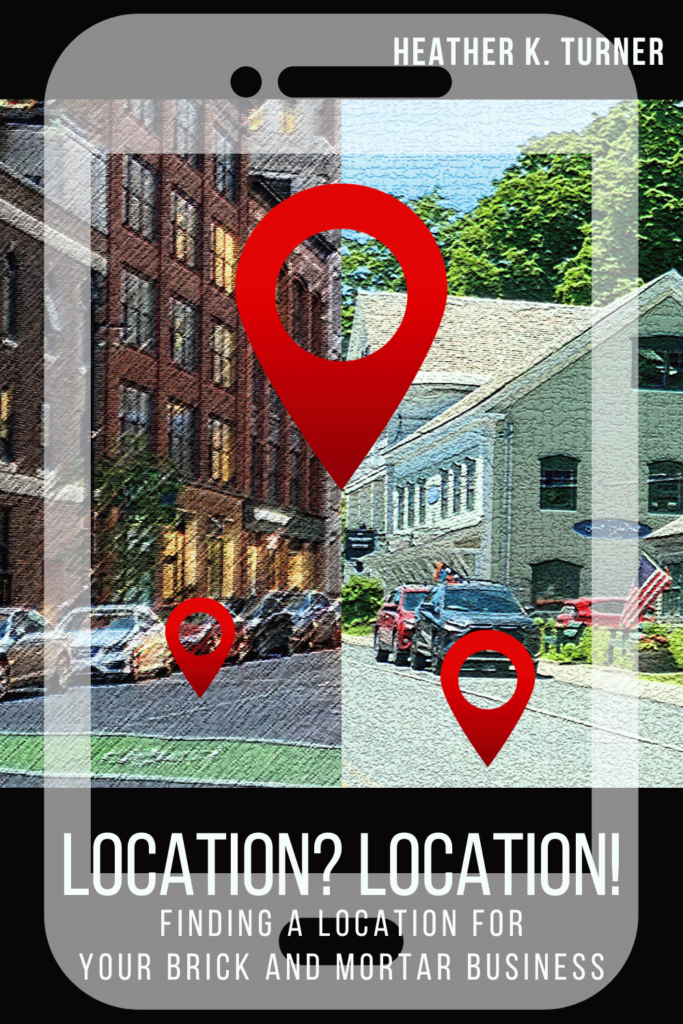by Heather T. | Aug 30, 2024 | Business, Marketing, Observations, Operations, Reputation Management
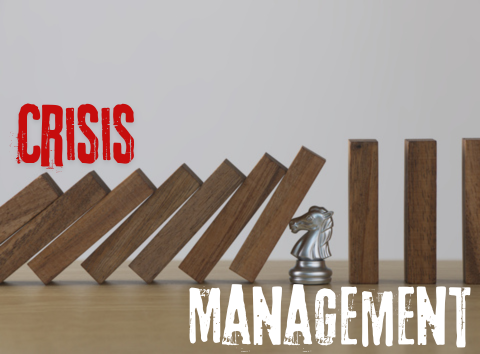 Back in February of 2020, I wrote a post about a crisis management plan for social media (A Social Media Strategic Plan for Crisis. An Outline for Bed and Breakfasts and Other Businesses) I had written it a few years back for a business client and yesterday did a workshop on Reputation Management and was going to share the checklist I had made up.
Back in February of 2020, I wrote a post about a crisis management plan for social media (A Social Media Strategic Plan for Crisis. An Outline for Bed and Breakfasts and Other Businesses) I had written it a few years back for a business client and yesterday did a workshop on Reputation Management and was going to share the checklist I had made up.
In reviewing it, a LOT has changed in just four years (Yikes!), so I updated it with some new information, and wanted to put the new version out there so if it’s useful to anyone, I hope it is of help.
My feeling is that with all the shoot first and ask questions later (i.e. “your business did this” and it’s a hot button for people, but that may not be actually the real story) that goes on in social media and online reviews and discussion, it’s better to be prepared in case something does happen, with the hope it never does, then try to scramble to regroup after the fact.
Please keep in mind the reference links to Facebook and other social links change every few years, but they are up to date as of now. In the future, if a link has moved, it’s best to go into every platform’s help section and search for the topic and you will typically find an updated link.
The Chess Piece
The horse chess piece image speaks to me about this topic because the piece is probably, in my opinion, one of the strongest and can be used the most strategically, and it moves the most unconventionally compared to the other pieces. Many chess players consider it as a key piece in winning a game, but can also be one of the weakest. Because knights are bound by a fixed number of movements, they are particularly vulnerable to traps.
When dealing with an online social media crisis, a business can be the knight that saves itself or it can fall into the trap of handling things not the right way, making things worse OR getting complacent and thinking a crisis has passed and stops monitoring, or stops being prepared to deal with if is not “done”.
You can download the plan in (PDF) Social Media Strategic Plan for Crisis or MSWord Social Media Strategic Plan for Crisis or Google Docs (make a copy or download) Social Media Strategic Plan for Crisis. This is an outline and checklist to be changed, or tweaked as needed, and to customize it to your own business.
by Heather T. | Aug 8, 2024 | Books, Business, Business Location, Starting a Business
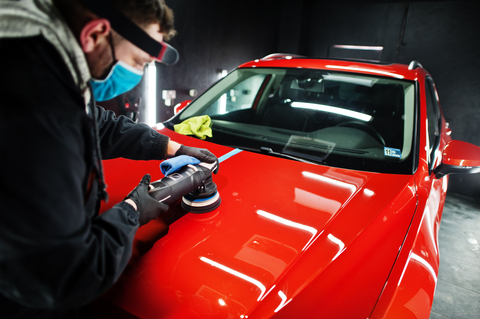 Finding a Location for Your Brick and Mortar Business was just published and one of the things that I thought might be useful to do was to go into a little more detail about some individual types of brick and mortar businesses, and some specifics on what to look for when doing a location assessment.
Finding a Location for Your Brick and Mortar Business was just published and one of the things that I thought might be useful to do was to go into a little more detail about some individual types of brick and mortar businesses, and some specifics on what to look for when doing a location assessment.
For example, scouting a location for a new hair salon has its own variables to consider above and beyond the information in the book, as does starting a auto detailing business and while most things (in the book) are applicable to any business, I wanted to elaborate more and drill down a bit for some additional things that can help any new or relocating brick and mortar business get started when doing a location assessment.
I originally had grand plans to do these as part of the book, but with all of the different types of brick and mortar businesses out there to go over, I probably would have finished it in the next century or so and at that point we might be talking about which planet to start a business on, not which street corner. 🙂
I take requests, so while I’m going to bounce around in between business types, if you are just starting a business and would like some pointers about what to look for when doing your location assessment please reach out. Information and feedback is free but I can’t promise to not make a blog post out of it, I promise to not share any personal/business information unless you are ok with it first though.
Now onto details.
Suppose you want to start an Auto Detailing business?
Here are a few tips in addition to our recent book that might be helpful in looking for a location.
Ensure the site is easily accessible for customers and provides ample parking and parking spaces are wide enough so that people with higher end cars won’t be afraid to park in your lot. Your target market is typically going to people with a bit of disposable income who can afford to have their car detailed and tight parking which can cause door dings and other body damage can be a detractor especially for repeat customers.
Opt for a location that allows you to maintain a clean, professional appearance to attract clients. Your service is cleaning/detailing cars, a brick and mortar location that offers easy clean-up and a facade with bright colors and lots of large clean windows can help appeal from a visual standpoint plus showcase any luxury or antique cars you might have detailed while they are waiting for customers to pick them up. Don’t forget about what the neighboring buildings and businesses look like as well.
Ensure good signage opportunities to promote your detailing services. While car detailing isn’t typically a walk in proposition, you do want to make it easy for customers who have made appointments to find you and depending on your location, traffic speed on the road and other factors, how far away can people see your sign, read it and then have time to pull into your business comfortably?
Consider locations near complementary businesses, like car dealerships (new and used) or service centers, to attract more clients. Depending on your location (near water bodies or tourism areas), you may also want to consider a lot size and entrance that can accommodate customers bringing in boats (which may be detailed prior to or after winter storage) and RVs.
Auto detailing requires large amounts of water for detailing vehicles. The location must have a reliable and adequate water supply to support the business operations. The location should have access to a consistent and high-volume water source and be able to properly manage and dispose of the wastewater generated from the business, either through connection to a municipal sewer system or the ability to install an on-site wastewater treatment and disposal system.
We would suggest doing a water quality test as well, hard water can leave spots and mineral deposits on vehicles. If the location checks all the boxes but has hard water, make sure you estimate what a water treatment system will cost you to install and upkeep when doing your business plan and projected financials.
Don’t forget to check zoning regulations to make sure the location allows for this type of business.
One additional tip, additional markets to promote to that may be good customer bases are car sellers who want to get their vehicle in tip top shape prior to selling private sale, or to a dealer, so it has better eye appeal. If this is a market you want to want to pursue, an value add on would be a service taking professional pictures of the vehicle for sale and assisting with a good sales writeup for people considering private sales of their vehicles.
by Heather T. | Jul 12, 2024 | Books, Business, Observations, Operations
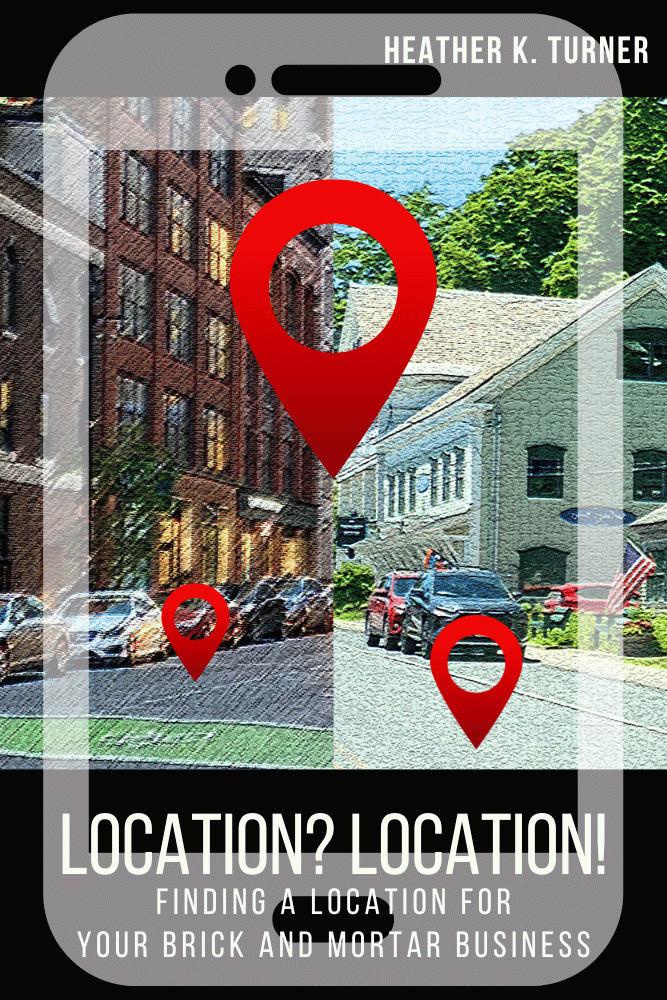 Are you interested in being an ARC Reader (ARC stands for Advanced Review Copy) for new books? These will primarily be business books, but we do have one fiction book in the works as well.
Are you interested in being an ARC Reader (ARC stands for Advanced Review Copy) for new books? These will primarily be business books, but we do have one fiction book in the works as well.
Our next book, Location? Location! Finding a Location for Your Brick and Mortar Business, will be ready to read in mid to late September 2024, with another book on marketing to follow in midwinter.
Signing up to be an ARC reader is an opportunity to read new books before they are “officially” published online and before anyone else.
In return, you agree to provide an honest review on Amazon to help others decide whether the book is worth reading or not. You need to be a current Amazon customer who has spent at least $50 previously to be able to leave a review. If you don’t have an Amazon account or have never used it, we also appreciate reviews on Goodreads. Amazon review guidelines.
I ask that reviews be honest, while I appreciate that people (especially ones that know me) might feel reluctant to leave anything critical on a review. Real reviews do help. And you can be kind AND be constructive at the same time. There is a great post on leaving reviews (positive and not so much) which is worth a read. Constructive feedback IS a gift.
ARC reviews should focus on what makes the book enjoyable or hopefully, in the case of most of my books, educational and valuable to new and existing business owners, while avoiding spoilers or major summaries (since most people reading the review won’t have read the book yet).
Talking about things like: was the information useful, easy to understand and did it give actionable tips or information can help new readers decide if the book suits their tastes and more importantly their informational business needs.
The Book will be sent in PDF format digitally by email about 3 weeks before official publication.
If this is of interest, please fill out the form to sign up! And THANK YOU!
Other Ways You Can Help:
- The #1 way you can help is to leave a review!
- Post a picture or quote from one of my books and tag me on Facebook or LinkedIn.
- Recommend one of my books on Goodreads.
- Pin or tweet your favorite of my books.
- Share one of my books on Facebook, Instagram or LinkedIn.
- Refer a friend that might find one of the books useful, especially if they are starting a business or in business and might need some help.
Location? Location? Finding a Location for Your Brick and Mortar Business overview:
Ditch the guesswork and navigate the key factors every aspiring business needs to consider before they sign on the dotted line for a property.
Finding a Location for Your Brick and Mortar Business is your roadmap to a thriving business reality. Order your copy today and turn your entrepreneurial dreams into brick-and-mortar success!
Whether you’re dreaming of opening a hair salon, a fitness center or a garden supply center, Finding a Location for Your Business offers the tools and knowledge to find a location that meets your needs and maximizes your businesses potential for success. Discover the secrets to making informed decisions and turning your entrepreneurial dreams into reality.
This comprehensive book covers essential topics such as community assessments, competition research, zoning and planning considerations, traffic counts, crime and safety, parking and traffic flow, employees and housing and much more.
Whether you’re a seasoned business owner or a newcomer to business ownership, this book provides valuable insights, and a detailed location and assessment checklist to help you make informed decisions.
by Heather T. | May 14, 2024 | Nonprofits, Observations, volunteers
Last week I ran a SCORE workshop on Recruiting and Retaining Volunteers for Nonprofits and there were some things I touched on that might be helpful for any nonprofits (based on feedback from my attendees) to think about as many people on the call were unfamiliar with them.
Often there is a discount between volunteers and the people running and organizing the nonprofit and it usually starts from the beginning when a volunteer first starts volunteering with an organization.
Many nonprofits I have worked with over the years don’t have a system or documentation in place for this. But some do and it will only help a nonprofit have outlined and to go over with new volunteers the expectations of what a volunteer will do, as well as the training expectations a volunteer may go through.
There are some simple bullet points that are key to volunteer communications.
- Clearly outlined
- Clearly explained
- Expectations
- Clear direction
- Do and Don’ts
Onboarding Checklist:
I also suggested an onboarding checklist for new volunteers and most of the nonprofits on the call were not familiar with the concept, so I came up with sample one based on the many nonprofits I have worked with over the years.
This is in Google docs, but can be downloaded as a Microsoft Word Document by going to the “File” menu in the top bar, then to “Download” and the submenu will give you the option to download it as MS Word.
ASK Principle:
Something I have used for years with volunteers, I call the ASK principle. I know there are variations of this floating around but I’ve found this works well.
ASK (Ask questions, Seek to understand, Know how to listen)
When applying the ASK Model within a nonprofit, it’s about creating a two-way dialogue that values volunteers’ inputs, addresses their concerns, AND strengthens their connection to the organization.
A: Ask Questions
Objective: Engage volunteers by soliciting their opinions, needs, and preferences to tailor the organization’s offerings and communications effectively.
Example: Using a volunteer survey (it can be anonymous) to seek feedback.
S: Seek to Understand
Objective: Dive deeper into the feedback or concerns raised by volunteers to genuinely understand their experiences and expectations from the organization.
Example: As a result of the volunteer survey, you follow up with ALL of your volunteers to go over the feedback results, positive and negative.
K: Know How to Listen
Objective: Actively listen to what volunteers are communicating, both verbally and non-verbally, to acknowledge their feelings and show that their voices are heard and valued.
Examples: While volunteer one-on-one meetings can be very insightful, if a volunteer is having a problem or issue with a supervisor or volunteer leader, they may feel reluctant to share. If it’s regarding another volunteer, they may feel like it’s telling tales out of school, or the reluctance factor may also be there because they may not know of any prior relationships the person they are speaking with may have with the person in question. Are they buddies, do they do things together, etc. I always recommend to nonprofits and business owners as well is if there is a management issue, have more than one person talk to the person experiencing some challenges. People may open up when speaking with someone else and other details may also emerge that were not touched on in the initial conversation.
Volunteer group meetings can also be very productive, but sometimes can be counter-productive if one or two people monopolize the floor. Having someone that can act and be impartial, a “Switzerland” so to speak, as a moderator, can help keep people on track and let others speak.
I’ve always found when listening to volunteers, it works well to echo back to a person, whether in a one-on-one setting or a group, “this is what I heard you say.” Is this correct or did I mishear or misunderstand?
This accomplishes three things, one it reinforces to the speaker that you were actually “listening” to them, two, it helps you better understand an issue or problem when you have to repeat it, and three, echoing back makes sure that what the person is “actually” saying is understood correctly.
They might have said, we are having a problem with a volunteer leader because they don’t respond quickly to phone calls or emails, YOU might hear, well they are having a problem with the volunteer leader, and they are unhappy but not specifically WHY or the WHY maybe misheard or in a lot of cases misinterpreted.
Volunteer Personas:
In 2022, I had written a blog post about customer personas and using social media to data mine for information. Customer personas can be extremely useful for creating customer profiles, but they can also be very useful to nonprofits.
You can use the same concept and create volunteer profiles and member profiles (if your NP is membership based) and that can help with recruitment of both. These examples are ones I created for a horse nonprofit organization as examples for a prior presentation.
As follows are two examples each of a volunteer persona and member personas.




S.W.O.T. for Nonprofits:
I also want to add, the benefit of using S.W.O.T. (Strengths, Weaknesses, Opportunities, Threats) analysis can also be very useful for a nonprofit and can analyze volunteers, board makeup, volunteer leaders, members, the organization itself, fundraising and help identify things going on in the organization that might need attention.
Having your board of directors do this in conjunction with your Executive Director and Committee Members helps to get lots of insights, different viewpoints and, in many cases, inspiration and direction.
These two examples are ones I’ve done on various nonprofits over the years that I have either volunteered with or worked with as a personal business client.


I hope some of these tools are helpful as an organization goes through their nonprofit journey.
by Heather T. | Feb 12, 2024 | Business, Food, Marketing, Observations, Operations, restaurants
 Recently there was an article on Eater. “Why not bring takeout containers to restaurants?” and I thought, wow this is such a great idea (not rocket science obviously) but I should start doing this. What a great way to save the environment and, by the way, save our favorite restaurants a few bucks in the bargain.
Recently there was an article on Eater. “Why not bring takeout containers to restaurants?” and I thought, wow this is such a great idea (not rocket science obviously) but I should start doing this. What a great way to save the environment and, by the way, save our favorite restaurants a few bucks in the bargain.
Which, of course, led to the inevitable 2 AM neurodivergent thought, OH!, how can a restaurant leverage this? There must be restaurants doing this already, and of course, there were and there are. Restaurants give discounts to diners who bring their own dishes (2019) and many more. One thing that I noticed though about the restaurants and other food service operations that offered this is there didn’t seem to be a ton of thought into “targeted” getting people back in the door. Some offered discounts off of a future meal, some off of a current meal, some free refills (for beverages) but not much real upselling.
From a customer funnel point of view, if you want to think about getting repeat customers back in the door, what’s the incentive to get them back in PLUS the incentive to spend more money?
I’d love to see a restaurant out there (and maybe there is, let me know!) who would offer the incentive “BYOC (Bring Your Own Container)” and get a voucher/coupon for a free coffee or tea and our signature dessert.
Why that? Coffee or tea doesn’t cost most to provide and if you created the incentive wisely a signature dessert could cost a few dollars or less to make. Tiramisu is cheap to make, so is a scoop of homemade (or a good prepared) mousse with some flavored whipped cream to zip it up. Dessert has a much higher profit margin on it typically than an entrée or appetizer.
If you just give them a discount or small incentive, it doesn’t do much for repeats, it can help, but what’s the upsell part of it?
If you get them to come in and get drinks, maybe an appetizer and a couple of entrees (make the must order an entrée as part of the small print on the coupon), it’s an incentive to get people in the door and spent money first.
Even if it’s a couple who come in regularly and they bring two takeout containers, give them two vouchers. If you look at it from the perspective of how is any different from giving them a $10 off coupon their next meal, it is different because your incentive is to give them something for free but they have to spend money first. Even without a couple ordering appetizers, if a couple’s tab is a couple of entrees (mid-priced restaurant average) 17.99 X 2, plus a couple of soft drinks (up the take if it’s beer or wine) 2.50 X 2, and the regular check average is $50.00 and you just “gave away” $3.50 in product, when it boils down to it that’s pretty inexpensive marketing. If your price points for your menu items are higher, the ratios are even better.
You actually get three birds with this: promoting eco-friendly practices, saving money on your own to go containers and getting people in the door for repeat dining. Even if you encourage regulars to give them to others, that’s not a bad thing, it increases brand awareness and you get the same result; you get more people in the door and they order the big-ticket items like entrees (and if your waitstaff is good at the in-person upsell, high profitably drinks).
If you are going to try any incentives like this, make sure they contribute to your bottom line.
I’ve seen too many restaurant coupons that just give a discount with no stipulations on use or no incentive to get people to buy more.
So if you create an initiative to bring in customers, track through what you get out of it. Is it a onetime sale, something that will get people to come in many times or something that will make people spend more money because of the incentive itself?
There were a couple of good articles I came across in searching for restaurants that did have to go container incentives that I think would be worth a read.
How can restaurants take advantage of sustainable packaging?
What Are Reusable Food Container Programs?

By the way, my first book just got released on Amazon this weekend in Paperback and on Kindle! Check it out! Finding a Location for your Restaurant: How to Scout the Perfect Location for your Dream of Opening a Restaurant or other Hospitality Business.
by Heather T. | Feb 7, 2024 | Business, Observations, restaurants
 There are three main types of people who want to open a restaurant.
There are three main types of people who want to open a restaurant.
Those who have been in the industry, usually chefs and cooks (but not always, sometimes it’s front of the house people), those who grew up in a restaurant environment, (i.e. parents or other family members owned or ran a restaurant), and the folks who have fallen in love with the “idea” of owning their own restaurant.
All of them have, and can run and own a successful restaurant, but I have found in 40 years of working in and with the hospitality restaurant that’s it the first two types that have better success and better success long term with running a restaurant.
I’ll be blunt and I am really not trying to talk people out of owning a restaurant, but to be realistic about what someone is getting into if they have never worked in a commercial food service establishment before.
For fans of, “The Bear” TV series while it has many realistic parts to it for at least the back of the house, apart from some glaring errors, (pretty much everyone in the industry knows what ServSafe is, whether or not your state requires it). IMO It’s still not a great representation of actually “owning” a restaurant and ALL that it entails. I think it hits the marks pretty high on the stress, the dynamics and many other things that happen in real life in a kitchen though and it’s worth a watch if you want to open a restaurant and not had ANY prior experience. But it still doesn’t cover many of the realities of the actual operations of a real restaurant, front of the house, back of the house, the day-to-day operations, the financials and the struggles with financials on a constant basis, checking in orders, employee theft, doing inventory on a frequent basis, dealing with difficult customers both online and off literally every day, dealing with vendors, scheduling staff, dealing with seasonal or economic slowdowns, the marketing online and offline, etc. etc. etc……………
While there have been some terrific food movies out there, mainly from the kitchen perspective, I have yet to see a restaurant movie that really truly reflects REAL life running a restaurant and I suspect it’s because no one “really” wants to see what’s behind the scenes on a real day-to-day basis.
It’s scary how much work, how much stress, and how much slog an owner has to get through daily, especially if they are a hands-on owner. Many chefs who become chef owners spend more time managing and dealing with day-to-day problems than cooking and I had several jobs before I got out of the business where I spent more time pushing paper than behind the line. Not fun, take my word for it. My passion is food and while I love excel spreadsheets, I got into the food business because I loved to cook, not because I wanted to become an accountant.
My first book is coming out shortly (Finding a Location for Your Restaurant) and with that I created a series of real life or lets call them, “lets get a reality check”, quizzes, so that people thinking about owning and operating a restaurant (regardless of whether they have experience in a restaurant industry or not) can get an idea of what they know, they need to know and what they WILL run into as an owner or lessee of a restaurant property.
I want to thank several hundred of my friends (both from the industry and from many other walks of life in other industries) for being guinea pigs to test these and get a baseline for the scoring.
Again, these quizzes are not meant to discourage people from wanting to run their own restaurant, but rather to provide some insight into the reality of it and many of the things that you, as an owner, WILL encounter.
I mention this in my book, but it bears mentioning here. Back in the mid 1990’s I considered buying and running a restaurant and in hindsight, I am so very, very, VERY glad I did not. It would have failed in under a year. With all that I know now, I look back at that person, who had a lot of cooking experience and some management experience and I can snark at myself honestly and say, “oh you foolish, foolish child”. because I had no clue at all about what running and owning a restaurant and doing it successfully really entailed.
Interested in trying the quizzes out?
by Heather T. | Jan 9, 2024 | Food, Observations, Operations, restaurants
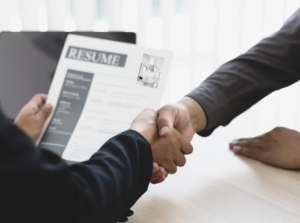 I had a meeting with a client recently, and a big part of our conversation was about hiring for a restaurant.
I had a meeting with a client recently, and a big part of our conversation was about hiring for a restaurant.
I had to dig out my notes to send them but realized I don’t think I’ve ever put these questions out on the blog that I have used in the past as part of working in restaurants in management and for the last twenty years in consulting, where I’ve helped interview candidates for positions.
While none of these questions are rocket science, and there are multiple websites out there offering lists of 10-20 questions, there are some questions on here that I’ve never seen listed by some hiring sites that have “suggested questions.”
It seems that many of the sites had people writing these questions more from a HR perspective, and not from an actual restaurant management perspective, or experience dealing with some of the realities that working in restaurants engenders.
So, if you find a few you have yet to come across, I hope it’s helpful.
The one additional thing I’ve found in calling references is to call suggested references but also call any past positions not given but listed on the job seeker’s resume (and to Google their name in quotes as well for any positions worked that they may not have listed, so (“John Doe” Chef, Kingston, NH) for example.
The one question I always ask of references and non-references is, “Would you hire them back?” if the reply is “Probably not, or no,” that can be a red flag. And in a lot of cases, that’s all you need to know.
I always recommend checking your state’s labor laws to find out what questions you can also legally ask past employers.
Doing a tag team interview (two interviewers) can also help: one person takes notes, and the other asks the questions. People’s body language and facial expressions can be enlightening when answering questions, but if it’s just you asking, you might miss those if your head is bent writing notes.
If you are interviewing multiple candidates, ask to record the interview with their permission because then you can go back and review exactly what was said. I’ve interviewed dozens of people for the same position, and sometimes, interviews get blurred together, and it’s challenging to make a final decision based on memory alone.
Two questions I ask both potential working chefs and GMs (that might be kitchen managers or GMs that are in charge of the whole restaurant or food service facility) is:
What can you tell me about this business? If they didn’t do their homework first regardless of the position hiring for) make it a short interview unless they strike you as a really good candidate. Anyone worth their salt though will at least look at the website, the really good ones will dig around online.
Is there anything that you see that you think could be changed or adjusted? (related to the first question).
Interview questions for working chefs and general managers:
What can you tell me about this business? (if they didn’t do their homework first regardless of the position hiring for) make it a short interview unless they strike you as a really good candidate. Anyone worth their salt though will at least look at the website, the really good ones will dig around online)
Is there anything that you see that you think could be changed or adjusted? (related to the first question).
Some of the questions are somewhat duplicated but asked in different ways. I always liked to throw some repeat questions in that are reworded as sometimes people change their answers. If a chef position is also a head chef or executive chef position, many of the questions asked of a General Manager would also apply.
Working Chef Questions:
- What are your salary expectations and benefits you’re seeking?
- Do you have any questions about the position or our restaurant?
- What specific skills and experience do you bring to our restaurant’s concept and clientele, and how do you align with our values and customer base?
- What inspired you to become a chef? Or cook?
- Describe your culinary journey, including your experience with specific cuisines, cooking styles, or restaurant types?
- How do you handle and adapt to changing food trends and dietary preferences, such as plant-based, gluten-free, or keto diets?
- How do you ensure food quality and consistency in a high-volume environment?
- Can you provide examples of conflicts or challenges you’ve faced in the kitchen and how you resolved them?
- Can you provide examples of conflicts or challenges you’ve faced managing menus, special events, and high-pressure situations?
- What is your approach to sustainability, locally sourced ingredients, and menu creation?
- What is your approach to balancing creativity with customer preferences and cost-effectiveness?
- How do you approach training and developing kitchen staff?
- What are your long-term career goals in the culinary industry?
- Can you share an example of a dish or menu item you created that was particularly well-received?
- Have you done food and wine pairings or food and other types of pairings? Please describe?
- Describe your leadership style and how you foster a positive and collaborative work environment.
- What are your expectations for staff in terms of performance and conduct?
- What are your proudest accomplishments as a chef?
- What drives your passion for cooking?
- What is your vision for the future of your culinary career?
- Who are your biggest culinary influences or role model?
- Are there any specific cuisines or dishes that have impacted your cooking style?
- What challenges have you faced as a chef?
- What are your future goals or aspirations?
- How do you stay up-to-date with industry trends?
- How do you balance your personal and professional life?
- What is your experience in managing a kitchen?
- What is your experience in maintaining food safety standards?
- How do you motivate and lead your kitchen staff?
- How do you handle equipment maintenance and unexpected changes in the kitchen that might impact service and quality?
- How do you encourage ongoing skill development among your kitchen team?
- What are your career goals?
- How do you balance the demands of the job with your personal life?
- How do you handle conflicts between staff?
- How do you effectively train new staff on kitchen procedures?
- What methods do you use to maintain organization in inventory and kitchen operations?
- What methods do you use to create staff schedules?
- What methods do you use to ensure safety and cleanliness in the kitchen and with your staff?
- What is your culinary philosophy or approach to cooking, and how do you stay on top of current food trends?
- What experience do you have with menu development and pricing dishes profitably?
- How do you cost out a menu?
- How do you cost out a recipe?
- How do you mentor any staff that doesn’t have as much experience as you do?
- How do you identify and source high-quality ingredients?
- How do you balance purchasing high-quality ingredients with cost effective purchasing?
- Tell me about your experience accommodating special diets, such as vegan and gluten-free ones,
- Tell me about your experience keeping your team motivated during both busy and slow shifts.
- It’s a slow day, what do you and your staff do?
- Are you currently ServSafe® certified? Which certification?
- Are you familiar with food costing software? If so, which one or ones?
- What Point of Sale software are you experienced with?
- Have you ever had a customer return a dish, and how did you handle this situation?
- How do you balance preparing perfect dishes with sending food out on time?
- Have you ever done inventories prior? Please describe the method and how often you were involved in doing them.
- Have you ever purchased from broadline and specialty vendors? Who and what did you purchase?
- Do you think it makes sense to purchase everything from one vendor? Or to price compare products?
- How many vendors have you dealt with prior at a time?
- Have you ever negotiated prices with vendors?
- Have you ever had to deal with a vendor that tossed product (meaning they would charge for a flat of produce and had taken out some product, turned the flat over gently and then again to make it look full) or a vendor that didn’t properly deduct tare weight from product deliveries?
- If you dealt with the above, how do you deal with the vendor?
- Have you ever run into a situation(s) where you couldn’t afford to make the minimum order for a food delivery and you desperately needed goods? What did you do?
- Have you ever run into a situation(s) where the restaurant couldn’t afford to pay vendor invoices and bills and your vendors cut you off from deliveries until past due invoices were settled? What did you do?
- How long have you been managing others?
- How many staff have you been in charge of prior and what positions?
- How long have you been managing others?
- What was your favorite place to work prior and why?
- Are you prepared to be on call if a line cook or dishwasher doesn’t show up for a shift?
Interview Questions for General Managers:
- What are your salary expectations and benefits you’re seeking? Do you have any questions about the position or our restaurant?
- As a general manager in charge of the entire restaurant, how do you reduce operational costs?
- As a general manager in charge of the entire restaurant handle disciplinary actions with staff?
- Have you ever had to discipline staff members? For what and tell us about a couple of situations.
- Have you ever had to fire someone? If so, how many people, tell me about the experience?
- Have you ever had to hire people? If so, for what positions, tell me about how you approach hiring?
- Can you describe your experience with managing difficult situations, including a specific example, and how you resolved conflicts involving both front and back of house staff?
- Can you describe your experience with managing difficult situations, including a specific example, and how you resolved conflicts involving a staff member and customer?
- Can you describe your experience with managing difficult situations, including a specific example, and how you resolved conflicts involving yourself and a customer?
- Can you describe your experience with managing difficult situations, including a specific example, and how you resolved conflicts involving yourself and a staff member?
- Can you describe your experience with managing difficult situations, including a specific example, and how you resolved conflicts involving yourself and an owner or manager above you?
- What Point of Sale software are you experienced with?
- Are you familiar with food costing? If so, please detail.
- Are you familiar with food inventories? If so, please detail.
- Are you familiar with setting menu pricing? If so, please detail.
- Have you taken a ServSafe® course, and are you currently certified? Which certification(s)?
- Have you ever taken TIPS® training and are you currently certified? (Important if you have a bar or alcohol service)
- Have you ever taken ServSafe Alcohol® and are you currently certified? (Important if you have a bar or alcohol service)
- Are you prepared to be on call and fill in if someone from the back of the house or the front of the house calls in sick or pulls a noshow?
- How do you give feedback to employees?
- Do you become “friends” with employees or do you keep a distance personally?
- What is your skill level with MS Office? If so, please detail what programs within MS office. .
- How do you ensure seamless coordination between the front and back of the house to deliver a high-quality dining experience?
- Give me some strategies for maintaining food quality and presentation?
- Give me some strategies for adapting to changing food trends?
- What measures do you take to adhere to health and safety regulations in both the kitchen and dining areas?
- Can you describe your experience with creating and managing budgets?
- Can you describe your experience with maximizing profitability for both the front and back of the house?
- Have you ever had to deal with employee theft?
- If you have had to deal with employee theft, what did you do?
- Have you ever had to deal with an issue of sexual harassment in the workplace with your employees?
- If you have had to deal with of sexual harassment in the workplace, what did you do?
- Have you done employee scheduling prior? For what daypart (breakfast, lunch, dinner, other) and for how many staff?
- Describe the most difficult scheduling problem you have faced as a manager?
- How do you approach training, developing, and managing staff to maintain high standards of service?
- How do you approach training, developing, and managing staff to maintain high standards for food preparation?
- What steps do you take to address customer complaints involving both food quality and service issues? Give some examples of how you would deal with complaints.
- How do you manage your time effectively to oversee all aspects of restaurant operations?
- What are your long-term goals for improving the restaurant’s performance and success?
- What do you think, in your own words, are your key responsibilities as a GM, including balancing time between overseeing the dining room and the kitchen, and what operational systems would you use to facilitate this?
- How do you plan on onboarding and training new hires?
- How do you plan to manage inventory, and use that data for operational decisions?
- Can you share strategies for effective staff communication, delegation, and handling issues like understaffing or team conflicts?
- Describe your leadership style and philosophy?
- How do you cultivate a strong service culture and manage the demands of the job while maintaining work-life balance?
- Are you familiar with the legal aspects of running a restaurant, such as liquor licenses (if applicable) and labor laws?
- Can you share your experience with restaurant marketing, promotions, and responding to online reviews and public feedback?
- How involved have you been in menu planning and development?
- Describe a strategy you’ve implemented for boosting staff morale and reducing turnover. (and after they give an example) ask them to explain how well it worked and what happened.
- Describe a strategy you’ve implemented to ensure high standards of customer service. (And after they give an example.) Ask them to explain how well it worked and what happened.
- Can you give an example of how you’ve successfully managed a diverse team and describe your journey in the restaurant industry leading up to a general management role?
- How do you balance the needs and priorities of both front-of-house and back-of-house staff?
- What are your strategies for attracting and retaining customers?
- What do you think is most important when dealing with customers?
- What motivates you and what do you find most rewarding about running a restaurant?
- What are your strengths, weaknesses, and career aspirations in the restaurant industry?
- Is there anything else you would like to share about yourself or your experience that might be relevant to this position?
- What is your strongest qualification for this job?
- Tell me of at least two reasons this job is a good match for your skills, strengths, experience and background?
- Give me an example that best describes your organizational skills.
- If offered the position how long do you plan to stay at the establishment?
- What new skills have you learned or developed recently?
- What kind of personality do you work best with and why? And what kind have you had any problems with working with in the past?
- What irritates you about other people?
- What do you think you like and dislike about the job we are discussing?
- Where do you see yourself in five years?
- What attracted you to this position?
 Back in February of 2020, I wrote a post about a crisis management plan for social media (A Social Media Strategic Plan for Crisis. An Outline for Bed and Breakfasts and Other Businesses) I had written it a few years back for a business client and yesterday did a workshop on Reputation Management and was going to share the checklist I had made up.
Back in February of 2020, I wrote a post about a crisis management plan for social media (A Social Media Strategic Plan for Crisis. An Outline for Bed and Breakfasts and Other Businesses) I had written it a few years back for a business client and yesterday did a workshop on Reputation Management and was going to share the checklist I had made up.








 Recently there was an article on Eater. “
Recently there was an article on Eater. “

 I had a meeting with a client recently, and a big part of our conversation was about hiring for a restaurant.
I had a meeting with a client recently, and a big part of our conversation was about hiring for a restaurant. 